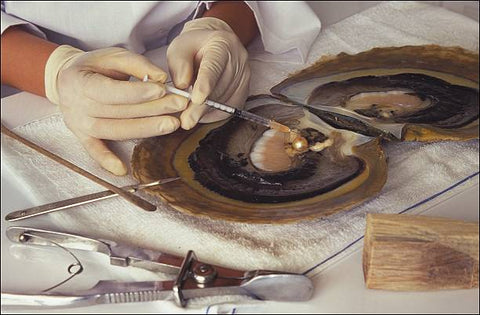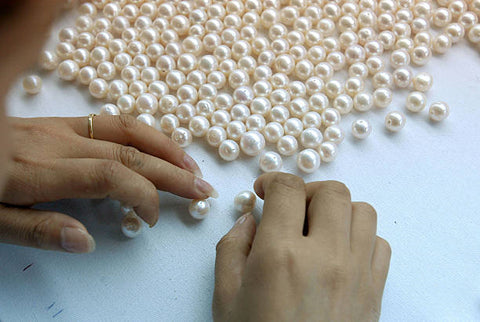Genuine Pearls - A Brief Overview of the Two Types of Pearls.
Natural Pearls
Natural pearls are formed when tiny invaders, bacteria or other irritants, find their way into a mollusk, and as a defense, the mollusk produces crystalline substance called nacre and begins to coat layers of it around the invader. The nacre is what gives pearl its smooth, lustrous surface. There are different kinds of mollusks however the pearls formed from oysters and mussels are valued as gemstones.


Cultured Pearls
Now you may wonder about the expansion of the pearl jewelry industry and how it is possible given the rarity of the natural pearls. All thanks to Kokichi Mikimoto, also known as “The Pearl King'', for creating the world's first cultured pearls.. Today, there is an abundance of magnificent pearl jewels in the market, that is not just limited to the wealthiest. In 1893, Mikimoto was widely known as the pioneer in the advancement of pearl cultivation. Mikimoto’s lifelong dream to “adorn the necks of all women around the world with pearls” continues to live on through his establishment till this day.


Natural and cultured pearls are classified as saltwater and freshwater pearls based on their place of origin. However, most pearls today, whether saltwater or freshwater, are cultivated in pearl farms.
Saltwater pearls consist of a variety of pearls such as Akoya, South Sea and Tahitian. Akoya pearls are produced in Japan and China, South Sea pearls are considered the largest of all pearls and produced in Australia, Indonesia and Philippines, and Tahitian pearls are sourced from islands in the French Polynesia.

Freshwater pearls are mainly produced in China and cultured in freshwater rivers, lakes and ponds. These pearls come in various shapes, sizes and colours. Freshwater cultured pearls produced in great abundance and are the most popular amongst consumers due to its affordable price point.







